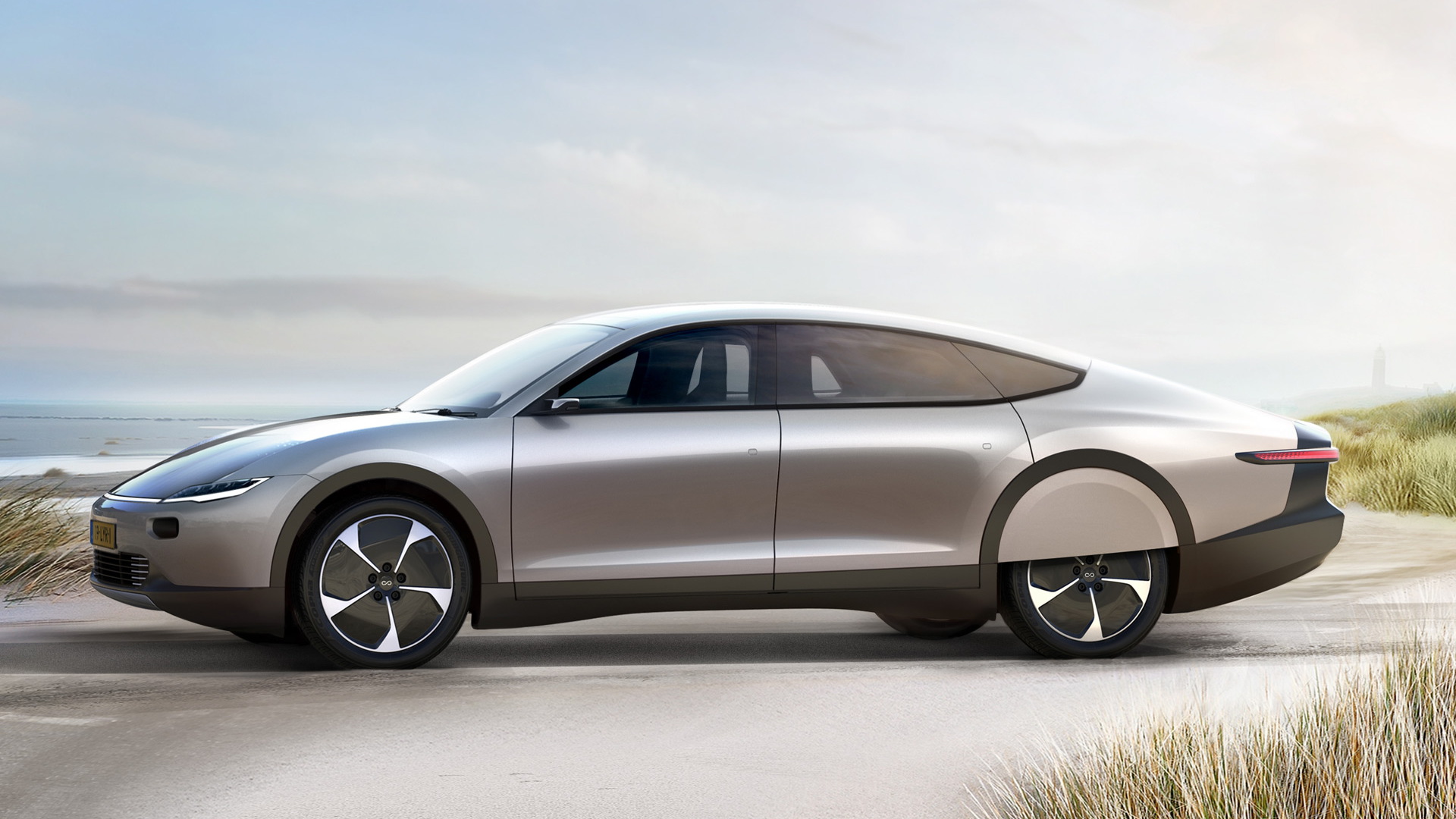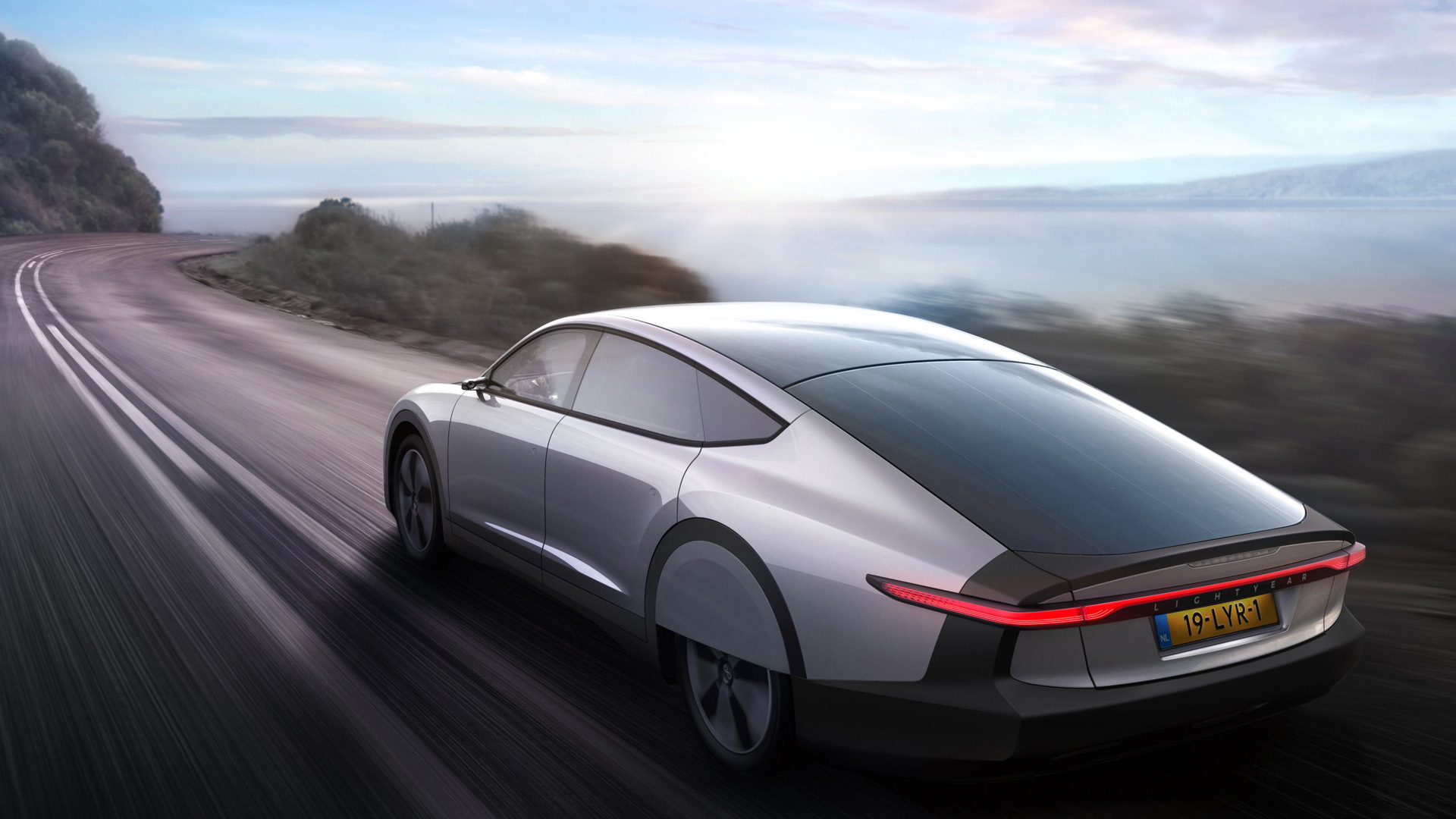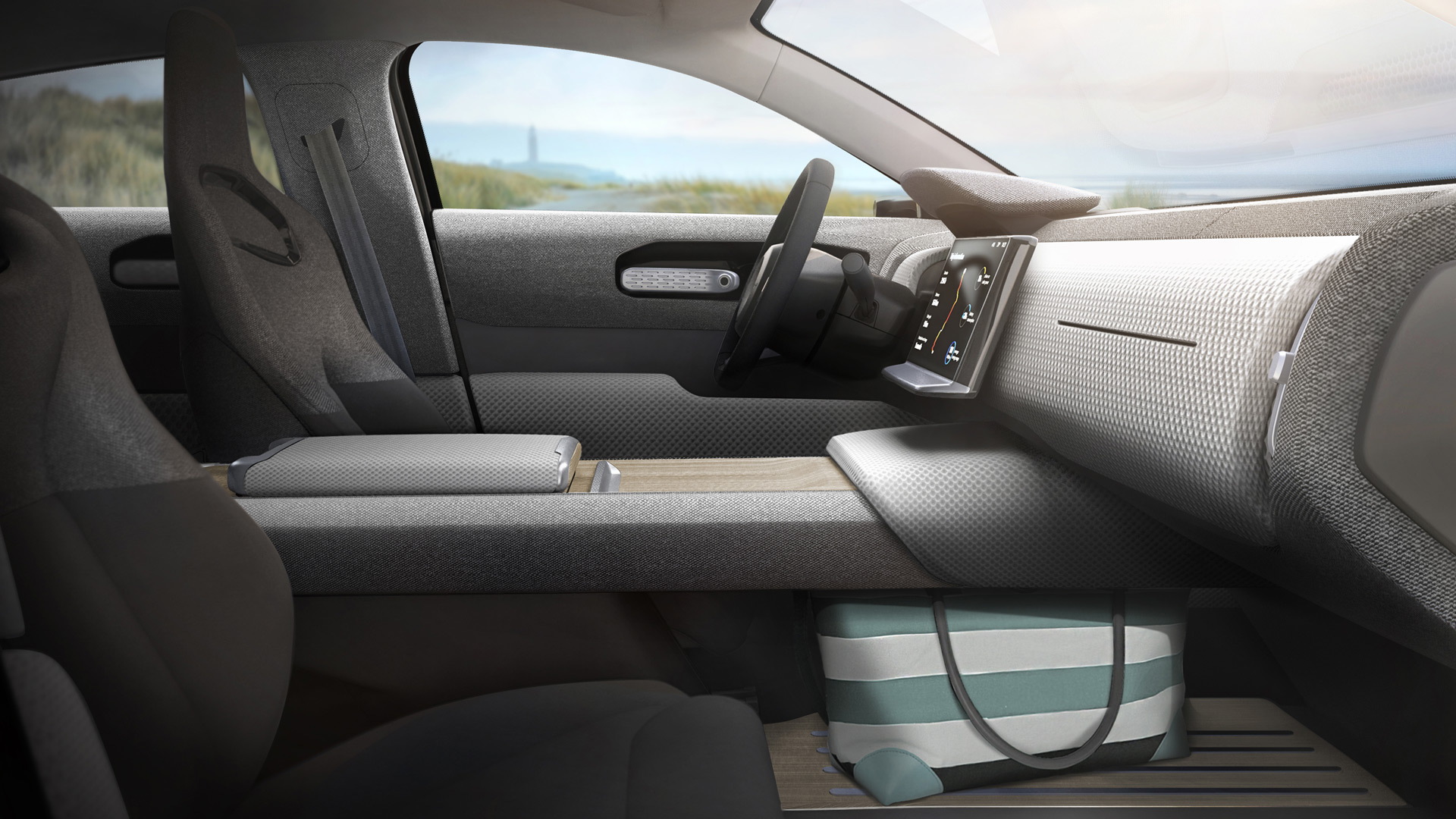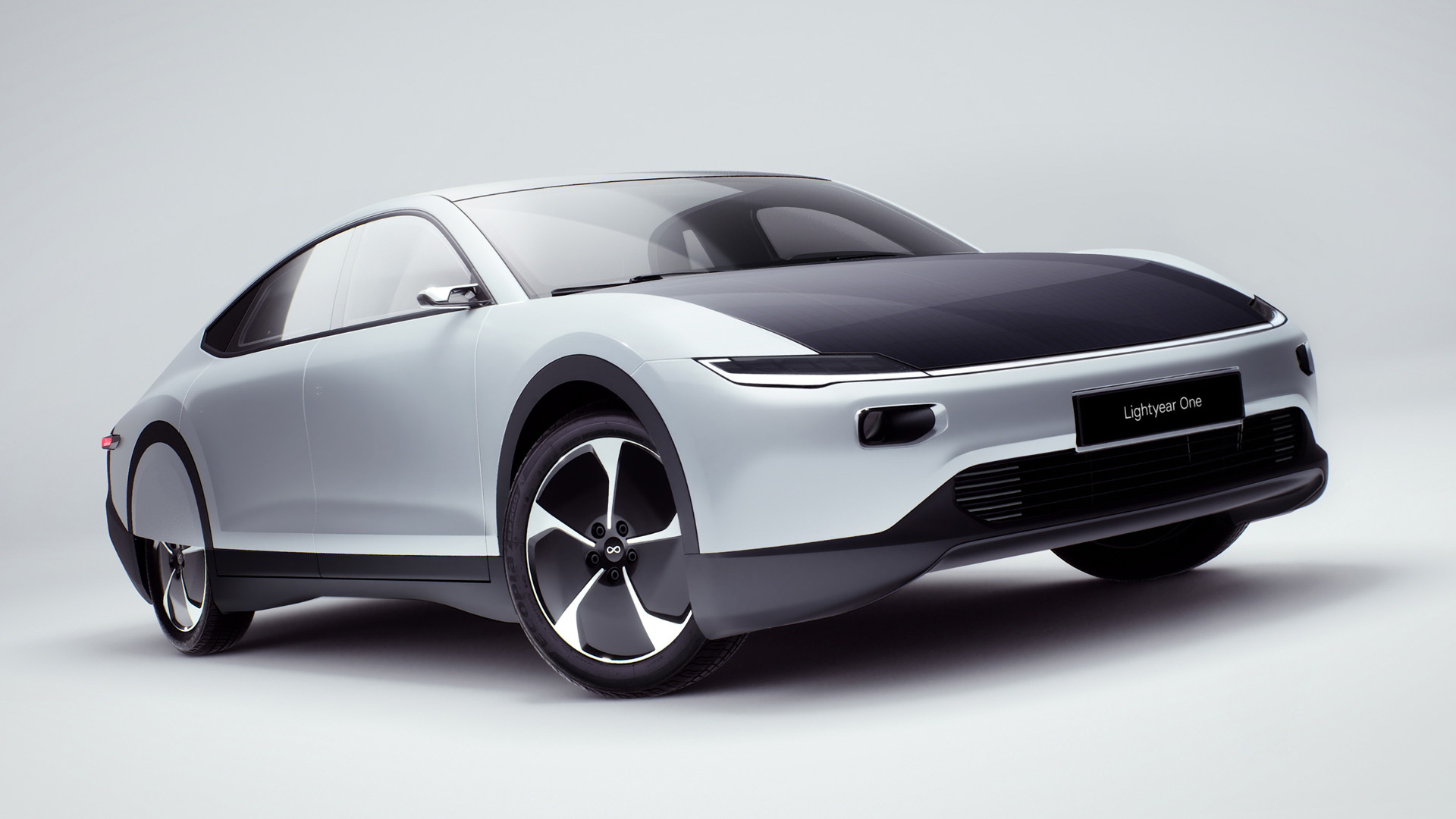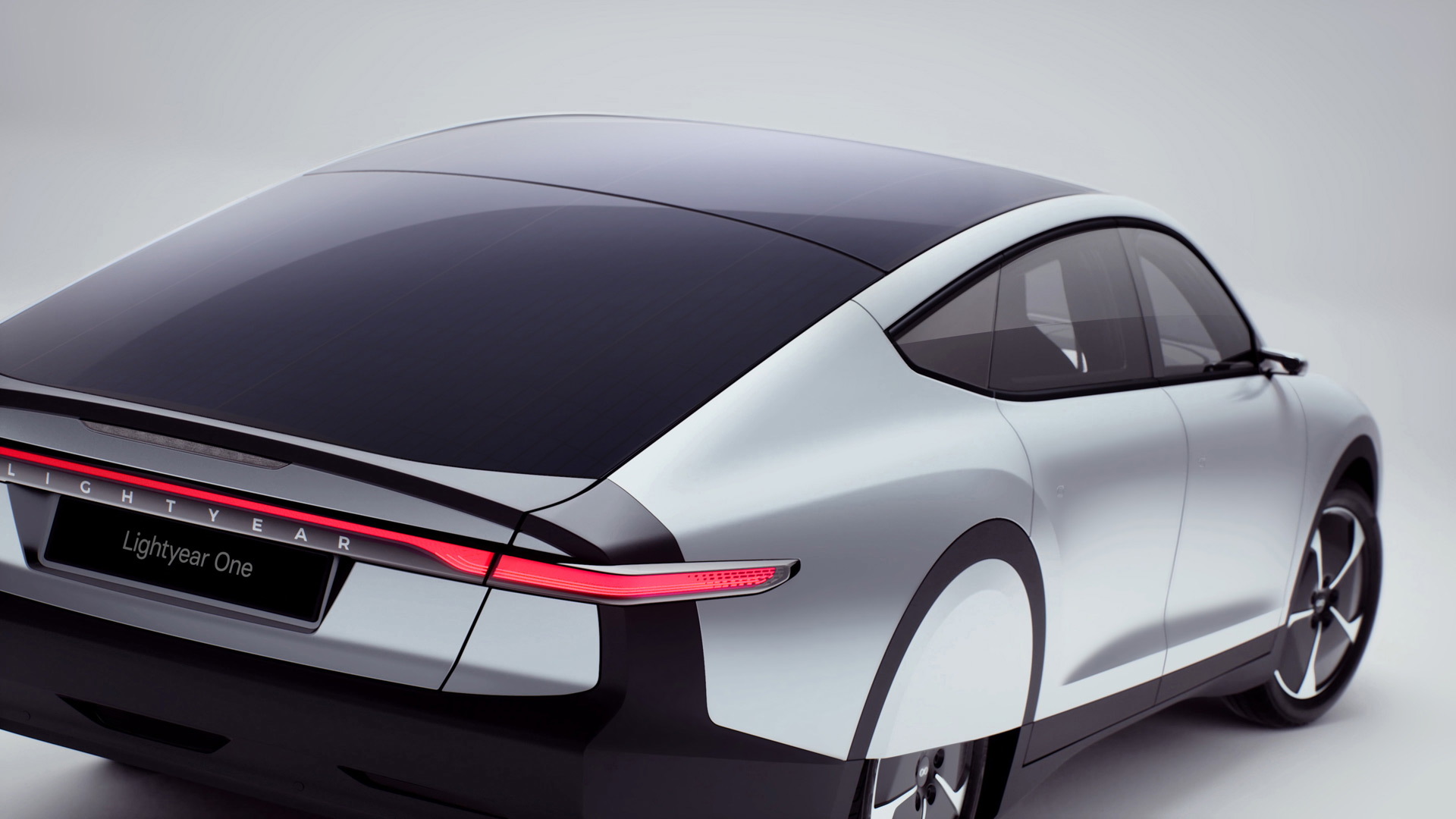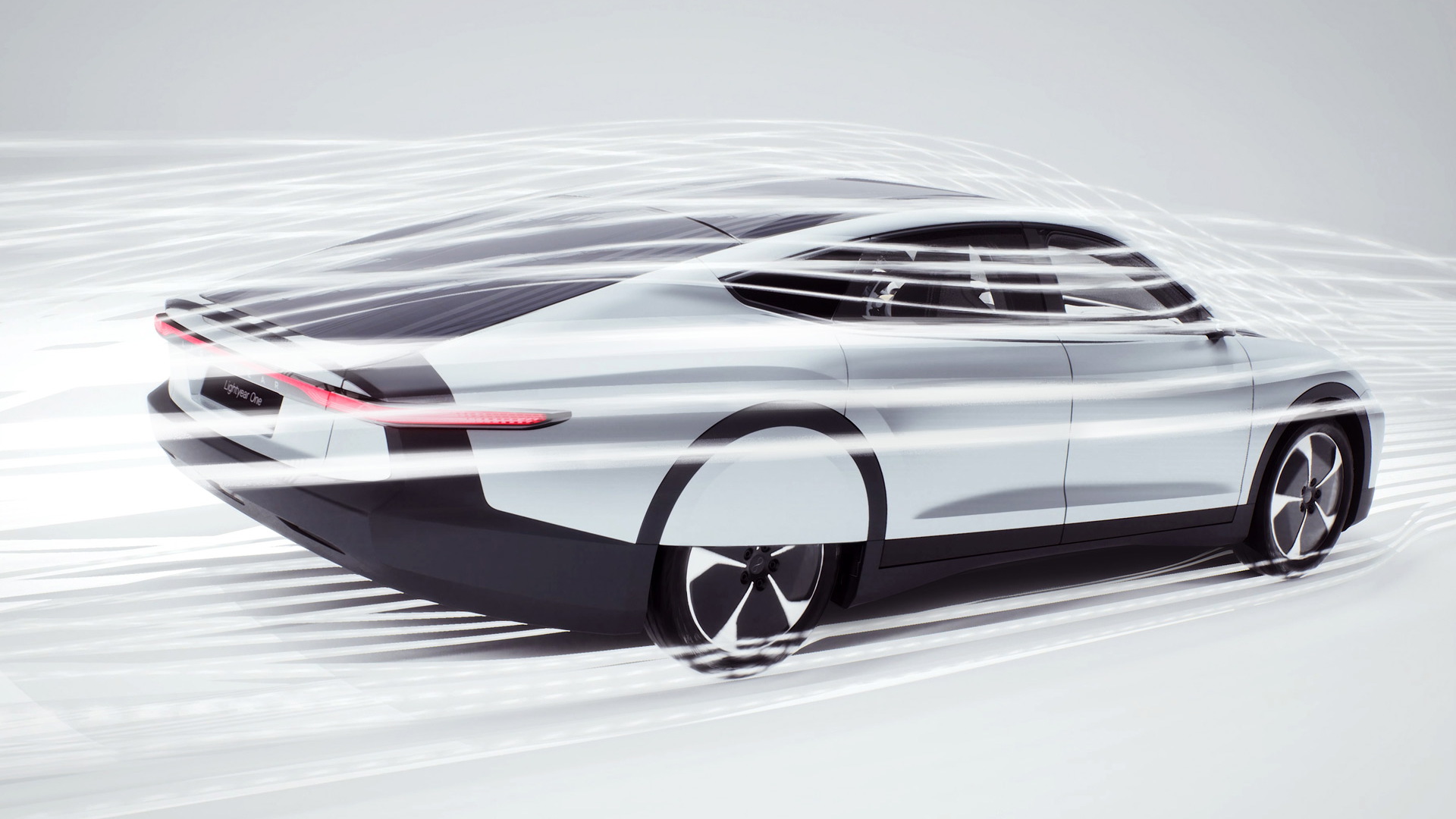If the future is electric, the latest electric-car startup company looks more like the future than most.
Dutch startup company Lightyear is developing a futuristic-looking sedan with sleek aerodynamics, wheel-hub motors, and 53 square feet of solar panels on the roof and hood. That could amount to about 795 watts of solar power—about three-quarters as much as is claimed for Europe's upcoming Sono Sion solar-assisted electric car.
Lightyear says the panels are enough to add 7.5 miles of range per hour on a sunny day. But there are plenty of asterisks we should add to a claim like that—such that it's a rate you likely won't ever see unless you're out in an open field in the middle of summer, at noon, parked at a very specific angle.
Lightyear was born out of solar race team in the World Solar Challenge, Solar Team Eindhoven. is tied for the most wins in the race across Australia. The team, based out of Eindhoven University of Technology in the Netherlands, has been looking to commercialize its technology since 2012.
The five-seat Lightyear One is all about efficiency, from its sleek aerodynamic shape to its unique wheel motors that eliminate the need for a transmission and allow space for a bigger battery. Lightyear claims it can drive 400 miles on a charge given sufficient sunlight to feed the solar panels. It has not specified the battery size but said that in a worst-case scenario the Lightyear One will have almost 250 miles of range.

Lightyear One
The car can also accept DC fast charging up to 60 kilowatts, likely using the CCS standard.
With no transmission, the wheel motors are capable of 0-62 mph acceleration in the 10-second range—more like a Prius than a Tesla.
The styling—somewhat reminiscent of a 1980s Citroën CX—was crafted by Italy's Granstudio and has among the best drag-coefficients of any production car, the company says, with an overall height of just 52 inches, a little taller than a Subaru BR-Z sports car.
At a price of more than $135,000, the Lightyear One is clearly aimed at a more luxury than mainstream market, and the company says it will build only 500 of them, starting in 2021. That could put it in competition with the Lucid Air and Tesla Model S.
Lightyear plans to follow up the model with more affordable, mainstream sedans and to build in some self-driving features in future models.
